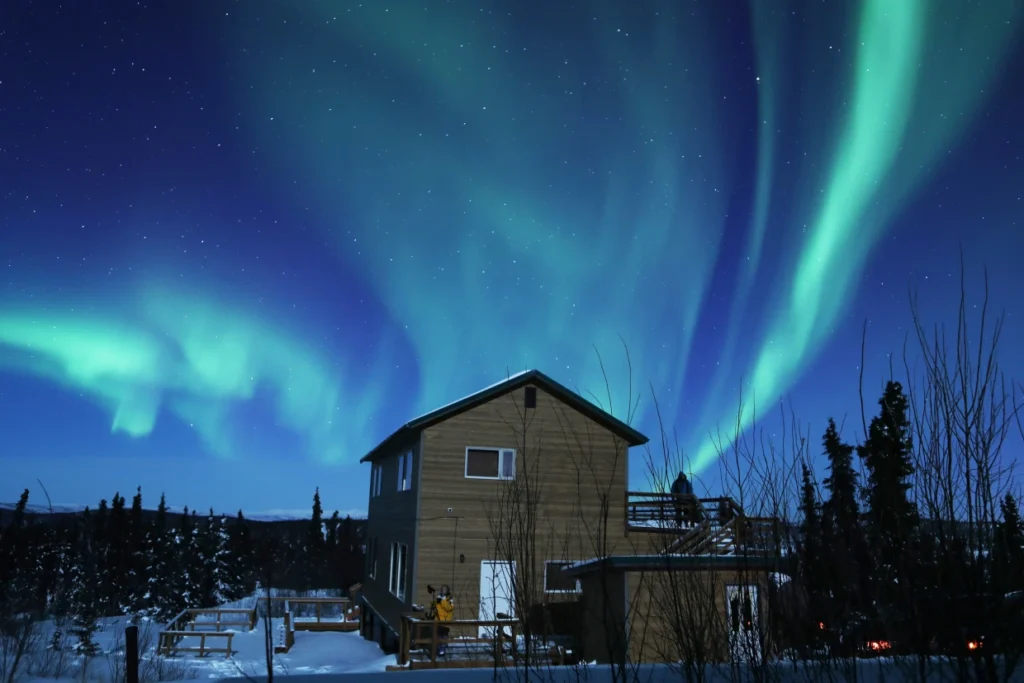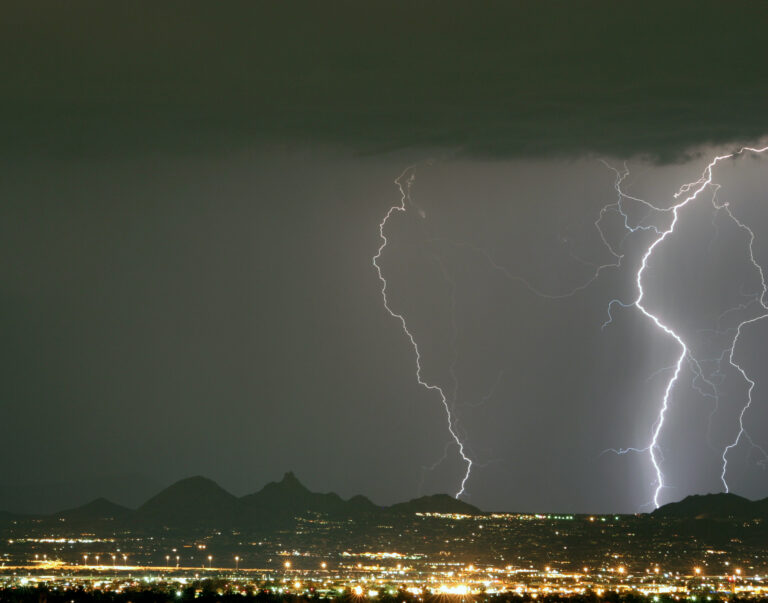A projection indicated the northern lights could be visible this week in more than a dozen states. It was updated Monday evening to show only modest auroral activity.
The northern lights may light up skies at high latitudes this week, though likely not in cities in the lower 48 states, as previously forecast.
An early forecast published by the University of Alaska Fairbanks Geophysical Institute initially indicated that, weather permitting, the northern lights could be visible Thursday in more than a dozen states, including ones at midlatitudes. The projection was updated Monday evening to show that auroras may be visible in Alaska and parts of several Canadian provinces and territories, such as Alberta, Manitoba, Quebec and the Northwest Territories, as well as a few U.S. cities at higher latitudes.
“Recent predictions of auroral activity visible much further south than Alaska have been making the rounds,” Don Hampton, a research associate professor at the Geophysical Institute, said in an email. “This prediction, several days ahead of time, is based on models run by the Space Weather Prediction Center, a part of NOAA, and located in Boulder, Colorado. The Geophysical Institute does not make long-term auroral predictions. Our aurora forecast is from SWPC.”
He noted that the models are based on a limited number of input measurements that track activity on the sun and the space between the sun and the Earth.
“There are only a few satellites and instruments dedicated to collecting these data, so the models typically have a wide range of predictions since the observations are relatively sparse,” Hampton wrote. “While large solar storms can be seen leaving the vicinity of the sun, and their direction and speed can be estimated, once they leave the local solar vicinity they cannot be tracked. During this time the solar storms can be slightly diverted or even reduced, and the final impact on Earth’s magnetic field may be different than predicted.”
Lt. Bryan Brasher, a project manager at the Space Weather Prediction Center, said it regularly produces a 27-day outlook of solar activity and that, roughly two weeks ago, it did include the possibility of a moderate disturbance of Earth’s magnetic field.
But these outlooks only give a rough idea of what could play out, he said, adding that aurora forecasts can only be reliably made when the hallmarks of solar storms are actually observed on the sun. Early projections often change or are refined by observing features of the sun as they rotate into view.
About a week ago, the center downgraded its assessment based on more up-to-date monitoring of the sun’s activity.
“Now we’re not predicting anything on the 12th or 13th,” he said. “Nothing out of the ordinary.”
Brasher said he’s not sure what caused the erroneous northern lights forecast to take off online, but added that it’s still very challenging to produce long-term predictions of space weather.
“At no point in time was anyone saying anything false,” he said. “There was a prediction out there that could have been valid. But ultimately, the prediction that was offered was already going to be a very minor storm to begin with.”
Source: https://www.nbcnews.com/science/science-news/northern-lights-visible-17-states-rcna93390


